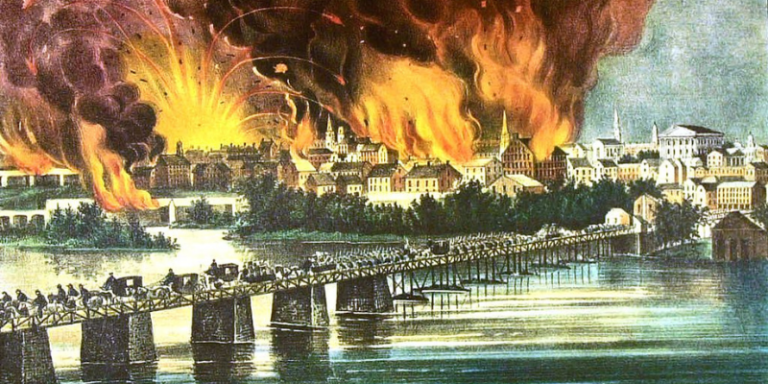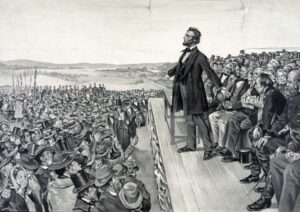Civil War: The War Between the States
The North and the South had grown so far apart, it took a war to bring them together.
By: GenZ Staff | June 25, 2020 | 633 Words

Richmond on fire, 1865. (Photo by Photo12UIGGetty Images)
The American Civil War officially began on April 12, 1861. The first shots were fired in South Carolina as the Confederacy took Fort Sumpter. The South won many of the early battles but ultimately lost the war. That’s why the United States stretches from the Atlantic to the Pacific today, and the Confederacy is just a memory.
The War Begins
The war began after a few southern states left the U.S. South Carolina was the first state to secede from the Union, leaving on December 20, 1860. The next six – Mississippi, Florida, Alabama, Georgia, Louisiana, and Texas – followed. They formed the Confederate States of America, wrote a constitution, and elected Jefferson Davis as their president.
In May, Union President Abraham Lincoln demanded that states send men to fight in the war, so Virginia, Arkansas, and North Carolina seceded too.
The Border States
Tennessee was the final state to fully secede. It joined the Confederacy in July of 1861. There were other controversial states, called border states, that didn’t seem to pick a side. Missouri and Kentucky never officially left the Union. However, many people in these two states fought for different sides.
Delaware, Maryland, Kentucky, and Missouri were all buffers between the North and the South. Losing those states could have meant losing the war.

Battle of Bull Run 1861 (Photo by The Print CollectorPrint Collector Getty Images)
Round One to the Confederacy
One of the biggest events of the early war was the First Battle of Bull Run – though it was called the First Battle of Manassas by the South. On July 22, the two armies fought the first major battle. The Confederacy won, despite being outnumbered.
Not only were Union troops routed and sent back toward Washington, D.C., but dozens of observers – including some congressmen – had to flee as well. They had been so convinced the Union would win that they had brought snacks and set up picnics to watch!
Emancipation and the Changing Tide
On September 22, 1862, President Abraham Lincoln signed the Emancipation Proclamation, which declared all the slaves in the Confederate states free. There were still slave states in the Union – the border states.
President Lincoln’s views of slavery were changing, but he was not yet ready to risk upsetting the border states by freeing all slaves – this was a strategic move to change how people saw the war. Before, the Union had been fighting to force rebel states to rejoin. Now, the war was about ending the evil of slavery in those states.
Gettysburg and the Beginning of the End
The Battle of Gettysburg was fought in and around Gettysburg, Pennsylvania from July 1 to July 3, 1863. It is thought to be the most important battle of the entire war. It was the bloodiest, and it was the beginning of the end for the Confederacy.

Gettysburg Address (Photo by Universal History Archive/Getty Images)
There were over 55,000 casualties at Gettysburg – more than any other single battle in the war. It inspired President Lincoln’s famous Gettysburg Address. While the fighting lasted for another two years, this defeat was the beginning of the end for the Confederacy. The South never recovered, and the Confederacy fought a mostly defensive war from that point on.
The War Ends, and Reconstruction Begins
On April 9, 1865, General Robert E. Lee surrendered his Confederate troops to the Union’s Ulysses S. Grant at Appomattox Court House in Virginia. Even then, not everyone was ready to stop fighting. Other Confederate groups continued to resist, though the last official army was disbanded on June 2. Still, some groups fought on.
On April 14, 1865, President Abraham Lincoln was assassinated. It was Andrew Johnson who took over – and it was President Johnson who officially declared the Civil War ended in August of 1866.
















